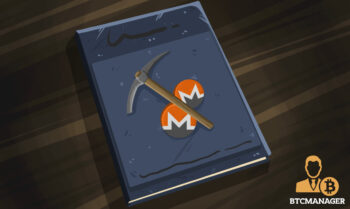2019-4-18 22:23 |
In celebration of Monero’s five successful years since launch, I have put together a short introductory guide to Monero. Monero’s goal is beautifully simple: a usable cryptocurrency that functions as users expect. That includes protecting users from network attacks, large-scale surveillance, and being accessible anywhere.
HistoryMonero was founded on April 18, 2014, by an alias “thankful_for_today.” The project was a fair launch of the CryptoNote protocol. Although CryptoNote had many flaws, it was one of the best privacy solutions available at the time, and it attracted many developers and researchers. Shortly after the creation, the Core Team forked the project away from the original creator, who wished to continue the project in ways the rest of the community disagreed with.
Monero launched with poor mining code, relatively weak privacy, and many other limitations. Over the years, Monero has improved its protocol to make it more robust. Monero added RingCT for much better privacy, set minimum ring sizes, created a vulnerability response process, and implemented bulletproofs. Monero has built one of the largest open-source communities and the mindset of continual improvement to tackle future challenges.
Developers and CommunityMonero has one of the most active development teams and community. Monero is stewarded by the Core Team, an unregistered organization that handles merge requests and maintains basic community infrastructure. Although the Core Team participates in discussions and helps set the vision, they do not make unilateral decisions. Decisions are usually made on Github issues, Github pulls requests and IRC meetings.
The community organizes into semi-autonomous workgroups based on function. Examples include the Community Workgroup, Research Lab, Malware Response Workgroup, Localization Workgroup, and Outreach Workgroup. Users are encouraged to join existing workgroups or to start their own. There is no shortage of work that the Monero project needs help with!
Users and developers are encouraged to ask questions on the Monero StackExchange. Monero has the third most active StackExchange site of any cryptocurrency, behind only Bitcoin and Ethereum. It’s a great resource, and we need the help of all our community members to answer questions.
TechnologyMonero is unique in that it is not built on Bitcoin’s code. Instead, it began with the CryptoNote protocol, but it has changed so much over the years that it is essentially its own platform. Monero is by far the largest cryptocurrency built on this code. Monero provides its transaction privacy in three ways: hiding the receiver, sender, and amount. There is no way to send a Monero transaction that is completely public on-chain. Instead, users can share the view key with select parties to reveal details of the transaction if needed. This group can be as small or large as necessary.
Monero hides all addresses by using a stealth address system. Users essentially receive funds in one-time-use safety deposit boxes that only they can open. No other person knows which boxes are assigned to them or how much they hold (if anything).
Monero hides the sender by obscuring the source of funds. Ring signatures hide the true spent outputs (these boxes) among others in the blockchain. Furthermore, since these outputs are not associated with specific addresses, observers cannot tell what addresses these outputs are associated with either. Instead, nodes see that transactions are sent from possible sources of funds, which are themselves references to very little. Stealth addresses and ring signatures work together to hide the transaction graph effectively.
Monero hides the amount with ring confidential transactions (RingCT). RingCT is based on confidential transactions for Bitcoin. Despite its name, this technology merely hides the transaction amount, not all transaction details. Luckily, Monero’s other defenses come to the rescue.
Monero has an accessible proof of work mining algorithm that is mineable on CPUs and GPUs. It has an adaptive block size to accommodate large spikes in transaction volume without growing unnecessarily or being trapped in an arbitrary constraint. Monero supports pruning, allowing old transactions to be cut down to about two-fifths of their size. Monero’s privacy, security, and scaling are always improving.
Learn MoreMonero has many community resources, but one of the best is a free copy of Mastering Monero that I helped publish. This is a good introductory guide for beginners and developers. Those interested in jumping into the granular details can read Zero to Monero.
The Community Workgroup holds monthly Coffee Chats where users can ask questions and listen to the latest news. The Revuo covers the biggest events of the week.
Purchase MoneroI personally don’t recommend purchasing Monero as a speculative asset unless you’re willing to take on the volatility. However, you can purchase Monero on many exchanges including Circle, Poloniex, Binance, Bisq, Bitfinex, and Kraken. Make sure that your investment in Monero is also an investment in the community; consider supporting the fundamentals that give the asset value by donating to various community projects at the Community Crowdfunding System.
A Beginner’s Guide to Monero was originally found on Cryptocurrency News | Tech, Privacy, Bitcoin & Blockchain | Blokt.
origin »Monero (XMR) íà Currencies.ru
|
|



